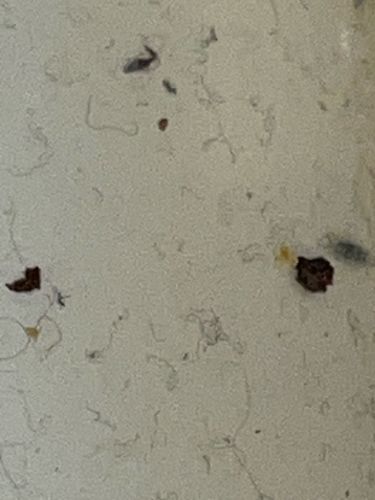Booklouse / Psocid
Scientific Name: Liposcelis spp. (a common genus, species identification would require microscopic examination)
Order & Family: Order: Psocoptera, Family: Liposcelididae (a common family for household psocids)
Size: Typically very small, ranging from 1 to 2 mm in length. They are often translucent or pale, making them difficult to see with the naked eye.

Natural Habitat
Booklice thrive in damp, warm, and dark environments with high humidity (ideally above 60-70%). Common indoor habitats include basements, bathrooms, kitchens, wall voids, around plumbing leaks, and areas with moisture issues. They can also be found in stored food products, books, paper, and furniture.
Diet & Feeding
Booklice feed on microscopic mold and fungi, starches, glues, and other organic matter found in humid environments. They do not feed on human blood or living plant tissue.
Behavior Patterns
Psocids are sometimes called 'booklice' due to their habit of infesting old books, papers, and other damp, moldy materials. They are typically found in undisturbed, humid areas. They are usually active at night and tend to scatter when disturbed. Their movement is often quick and jerky. They do not bite or sting.
Risks & Benefits
Risks: Primarily a nuisance pest. They can infest stored food products (grains, cereals), books, and other household items, potentially contaminating them. In large numbers, they can be an indicator of high humidity and mold issues in a home. They are not known to transmit diseases to humans or pets. Benefits: In natural environments, they play a role as decomposers, feeding on decaying organic matter and fungi.
Identified on: 8/31/2025